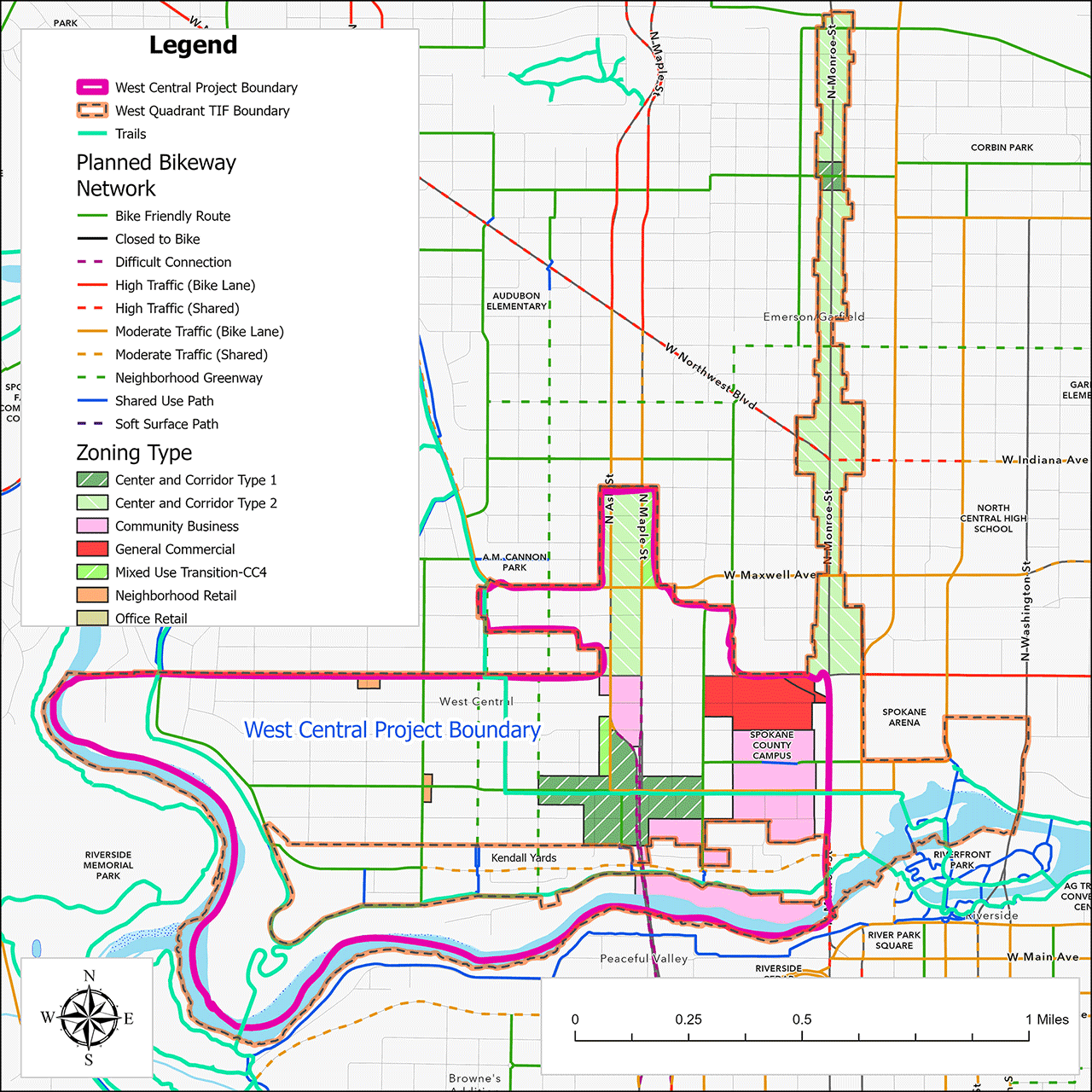West Central Infrastructure Project
This project seeks to identify and rank public infrastructure projects for the West Central Neighborhood within the boundaries of the West Quadrant Tax Increment Finance District. The West Central Neighborhood Council, REACH West Central, the City of Spokane, and neighborhood stakeholders and non-profit organizations will guide project selection and preliminary design based on goals for community reinvestment.
Final Report
Please read the final report to learn more about recommended projects.
Project Area Map
Project Background
To help address the West Central Neighborhood’s condition as one of the most impoverished in Spokane and the State of Washington, the City of Spokane created the West Quadrant Tax Increment Finance District, or WQTIF District, in 2007. This allowed the City to raise funds for public infrastructure and community development projects. The founding legislation authorized a series of projects focused on streetscape improvements, traffic calming features, and utility upgrades designed to support economic development within the District.
In 2009, West Central residents formed the West Central Planning Group to develop the West Central Neighborhood Action Plan with the purpose of carrying out the neighborhood improvement projects identified by the WQTIF. In April 2022, the Neighborhood Project Advisory Committee (NPAC) voted to expend WQTIF District funds on this West Central Infrastructure Project to determine the feasibility and design of infrastructure improvements. Spokane City Council voted on and passed this funding proposal on February 27, 2023. This project will carry out the feasibility and design process described in that proposal. This project will also advance the priorities identified for the WQTIF District in the District’s originating legislation, Ordinance C34032 in 2007 and Ordinance C35870 in 2020, and as identified by the West Central Neighborhood Council, REACH West Central, and the WQTIF Neighborhood Project Advisory Committee.
Project Description and Approach
This project seeks to undertake a community-led "co-design" process, characterized by participatory design charrettes, to advance design concepts for a series of streetscape, traffic calming and public space improvements. Elements of this process include project selection, prioritization, and concept development. Each project concept will address selected intersections and corridor segments within the public right-of-way, focusing on crosswalk treatments, sidewalk enhancements, bump-outs and curb extensions, street trees, street furniture, bus shelters, pedestrian lighting, and bicycle infrastructure, among other similar improvements. The concepts will identify opportunities to coordinate with needed underground water and sewer utility upgrades.
This project will include extensive community outreach strategies and events to determine infrastructure improvements that most effectively combine community support, potential for economic development impact, and cost-effective use of the WQTIF District funding. Throughout, a participatory approach will facilitate involvement of community members and project stakeholders, including representatives of community organizations, local businesses, and faith institutions, in the development of all proposals. Insights from community outreach and development feasibility analysis will inform a set of conceptual project designs.
Contact Information
Email questions or comments to
westcentralproject@spokanecity.org
Related Information
- Final Report with Appendices (PDF 9.8 MB)
- Final Economic Impact Analysis (PDF 2.3 MB)
- Public Survey – Fall 2024
- Online Open House
- West Quadrant Tax Increment Finance District
- Project Advisory Committee
- Chestnut-Elm Neighborhood Greenway
- Chestnut-Elm Final Concepts (PDF 4.1 MB)
- West Central Neighborhood Council
- West Central Neighborhood Plans
- REACH West Central
- Bicycle Master Plan
- Bicycle Master Plan – Current and Future Network Map
- City Council Project Resolution (PDF 7.6 MB)
Project Updates
Want to Receive Updates? Sign up online

